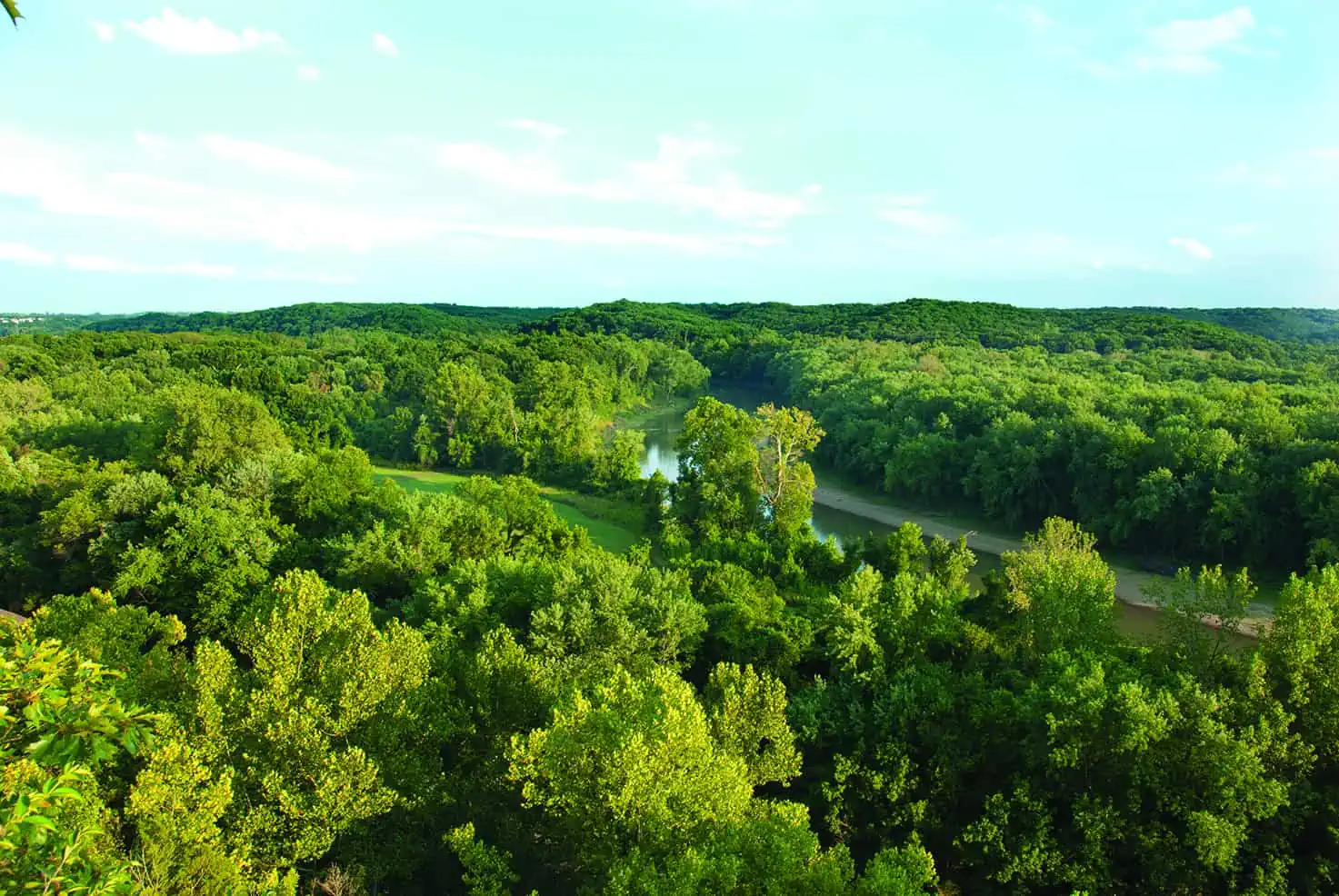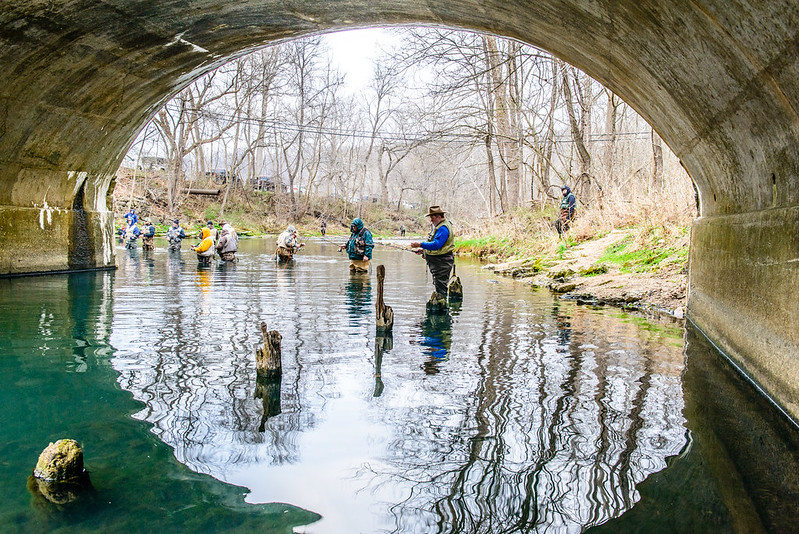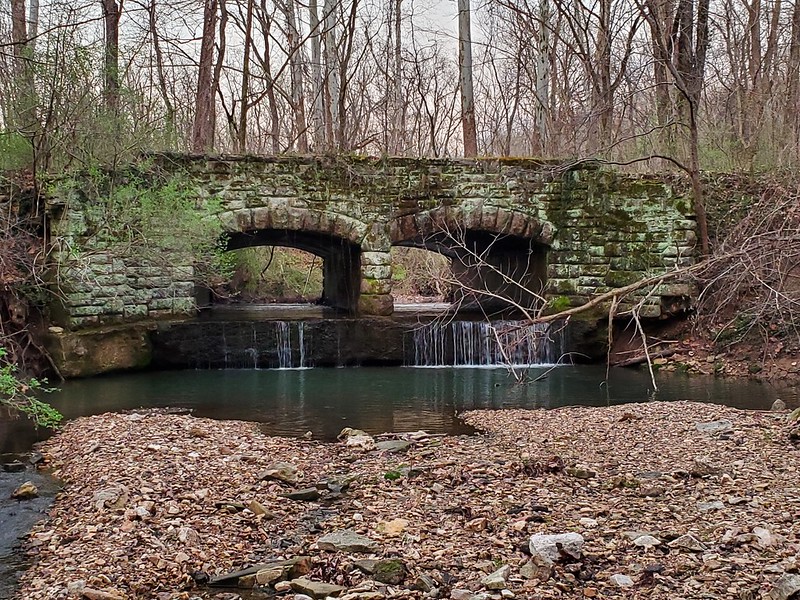Roaring River State Park is one of the “grand old ladies” of state parks. You can fish some of the best trout fishing anywhere, stay in the rustic lodge, dip your toes in the cold, clear spring and so much more. Make your travel plans and check out this park every season.
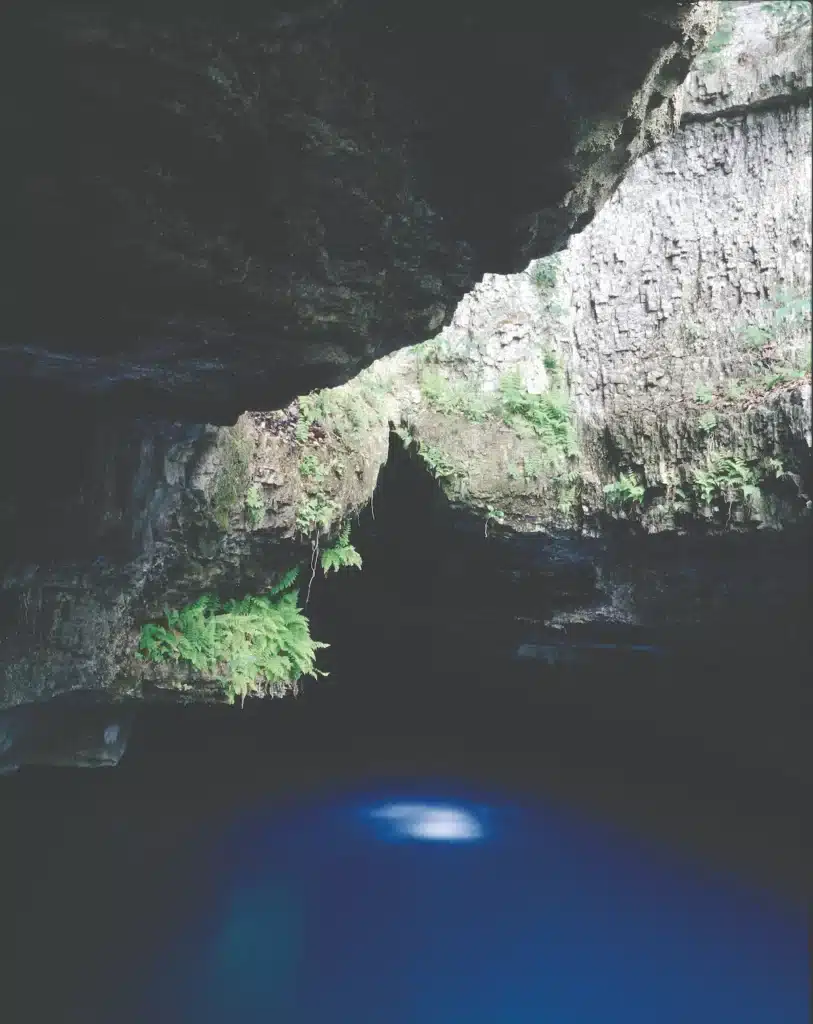
Photo by Oliver Schuchard
IT DOESN’T “ROAR”—BUT IT ONCE DID. Or so they say. The spring once gushed from a cleft in the dolomite bluff, twenty million gallons daily that tumbled and cascaded over, under, and around a rocky escarpment, down to the streambed below. But in the 1930s, the Civilian Conservation Corps (CCC) built a dam in front of the cleft in the bluff, and the cascade was submerged beneath the deep, blue pool we see today. A small trickling flow from the bluff high above falls into the pool, spraying and refreshing the clumps of ferns, columbines, and mosses that line the dolomite ledges that extend into the shallow, cave-like cleft in the rock. This grotto of blue and silver water, gray rock, and delicate green ferns in quiet indirect light is as lovely a scene as any in the park system.
Roaring River is one of the “grand old ladies” of the Missouri state park system, dating back to the 1920s. A classic in many ways, it has a breathtaking setting: a deep, narrow valley framed by high, forested slopes—the look of mountainous terrain. Because of its age and size, it was a logical choice for development by the CCC during the Great Depression. In addition to the dam at the spring, built in support of the trout-raising operation that stocks the spring branch running through the park, there are many rustic timber and stone structures built in the traditional CCC style. Coupled with a modern lodge of rustic appearance, the buildings stamp Roaring River as a park developed in the golden age of park design and construction.
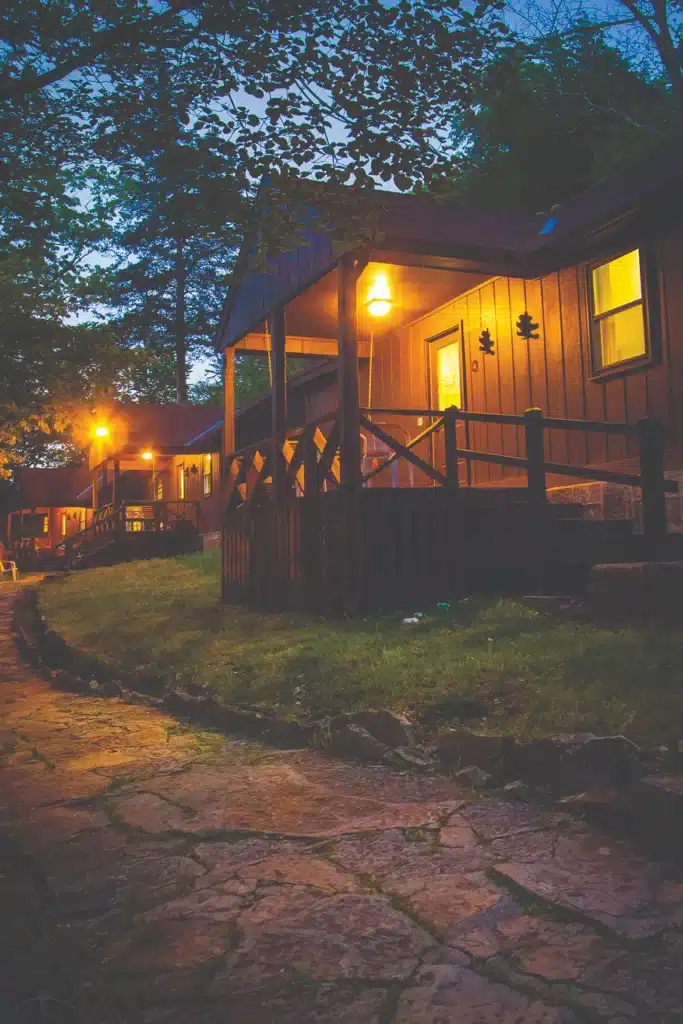
Photo Courtesy of Missouri State Parks
It is a popular park, drawing visitors from Missouri and beyond to engage in many forms of traditional state park recreation. The adjacent Mark Twain National Forest provides a valuable buffer against commercial development. And the park, with its large, long-protected acreage, harbors a remarkable assortment of native southwest Ozark species and natural habitats, including a large complex of open dolomite glades.
The intensely rugged hills that embrace the valley of Roaring River are part of the White River Hills region of the Ozarks, distinguished by the large scale of its scenery, the dramatic depth of its valleys, the size and openness of its glades, and the unusual wealth of its native plant life, with both Appalachian and southwestern species.
Driving south toward the park from Cassville on Highway 112, you pass through gently rolling uplands, and then, very near the park boundary, the mild upland abruptly falls off into steep, hilly terrain. You travel down into the mountains at Roaring River.
Since people first arrived in the southwestern Ozarks, the rushing cold purity of the river has been a magnet. American Indians camped there, and later, European settlers found utilitarian work for the waters of the spring branch, developing mills for grain, saw timber, wool, and locally grown cotton. But despite these developments, the river still attracted people to its beauty and restfulness.
Barry County itself has not always been a very restful place. The Butterfield Overland Express crossed it on the main street of Cassville in its brief but exciting life in the late 1850s. Early in the Civil War, the pro-Confederate majority of the Missouri General Assembly convened briefly in the county courthouse at Cassville after adjourning from Neosho, having earlier been driven out of Jefferson City by the Union army. Gov. Claiborne Jackson signed the Missouri Act of Secession at Neosho on October 31, 1861, paving the way for Missouri’s acceptance by the Confederacy as its twelfth state. The hills around Roaring River served as hideouts for wartime guerrillas and outlaws, and large-scale troop movements traversed the countryside nearby, going north and south.
Sometime after the war, the spring branch was stocked with trout, and a small resort community grew up in the valley. Part of the valley floor was subdivided into hundreds of tiny lots for cottages and com- mercial development. By the turn of the twentieth century, wealthy businessmen from Kansas City and St. Louis used Roaring River as a sporting retreat. One of these St. Louis businessmen, Dr. Thomas M. Sayman, tried to interest Gov. Arthur Hyde and his game and fish commissioner, Frank Wielandy, in purchasing the area as one of the state’s first parks in 1924, but the price was too steep. Sayman then appeared somewhat mysteriously at a courthouse sheriff’s sale of much of the Roaring River property in 1928 and won the bid for $105,000. Rumors that the eccentric and spectacularly bald promoter planned to develop an elaborate tourist resort were laid to rest when he promptly donated more than 2,500 acres to the state of Missouri.
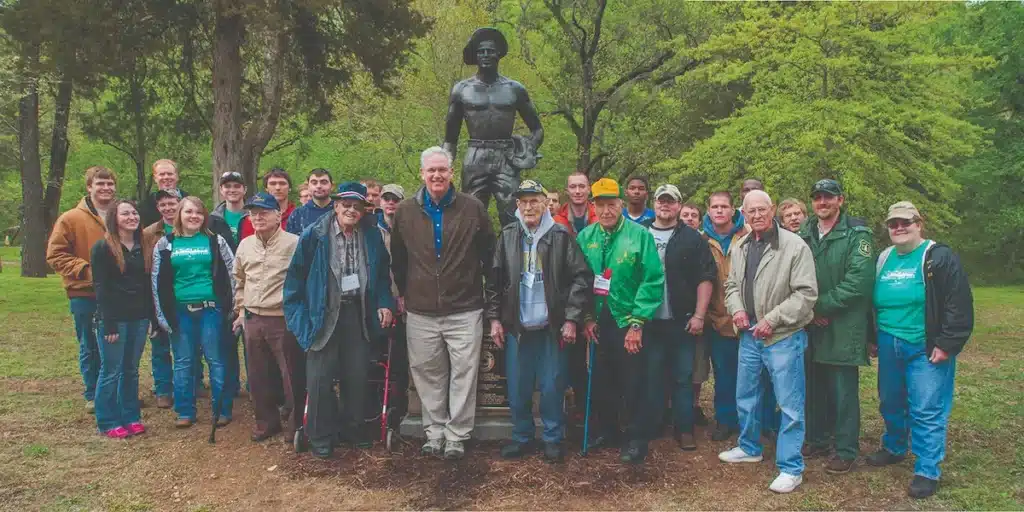
Photo Courtesy of Missouri State Parks
In the 1930s, the primary development of the park was undertaken by Company 1713 of the CCC and by crews of the Works Progress Administration. This work, under the supervision of the National Park Ser- vice, illustrates the rustic style of CCC park architecture. It included a fish hatchery and related structures, rental cabins, Deer Leap and other trails, picnic shelters, restrooms, and the original three-story park lodge of native stone and timber, now renovated. The CCC camp enrolled hundreds of young men from 1933 until 1939, and for the most part, the facilities they built are still sound and in service. Even the officers’ barracks area has survived as Camp Smokey, a group camp. Near a CCC shelter in a picnic area now stands a larger-than-life bronze statue of a CCC worker, dedicated in 2013 in tribute to the tens of thousands of workers who built facilities in most of the state parks in the Depression years of the 1930s.
One CCC effort, however, had a rather tortuous history. In 1936, the crew began construction of a thirty-acre artificial lake, contoured to the steep slopes of the narrow valley and with a beach and a large bathhouse. By early 1939, park officials realized that the lake was silting up too fast to be successfully maintained—a consequence of erosion from the unprotected, overgrazed land near the headwaters—and they proposed construction of a swimming pool in order to make use of the impressive bathhouse. Later that year, a disastrous flood damaged much of the CCC work in the valley, and crews were diverted to cleanup and repair of higher priority facilities. The bathhouse became a clubhouse, and then was beautifully renovated as the Ozark Chinquapin Nature Center, where visitors can learn about the perils of land abuse and about the still abundant natural wonders of the White River Hills.
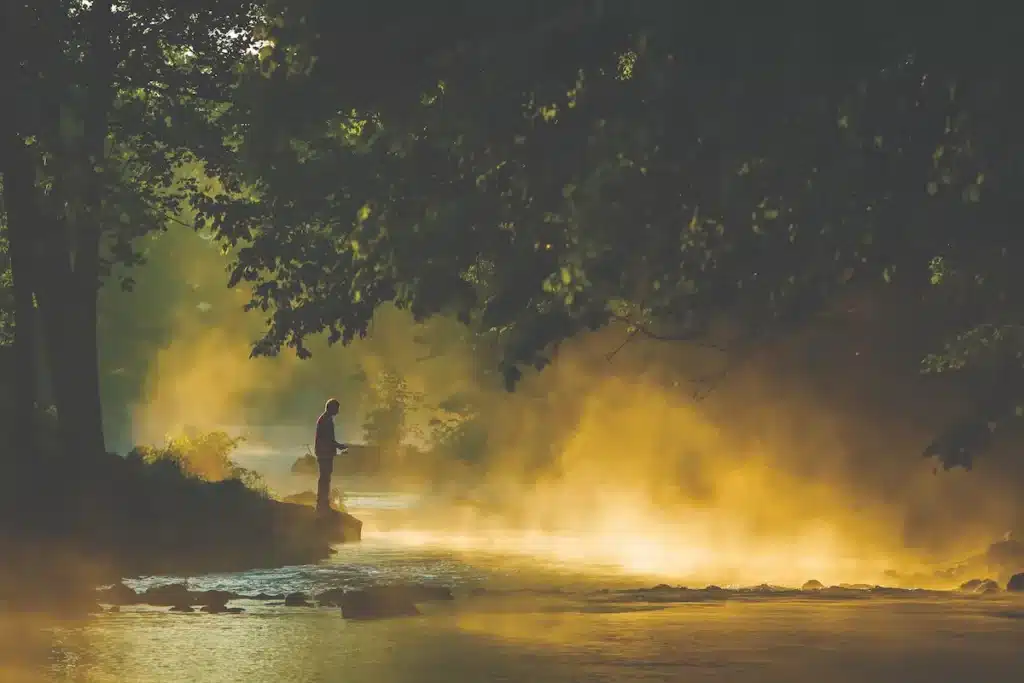
Photo by Kyle Spradley
For most visitors, the central attraction at Roaring River is fishing for rainbow trout that are regularly stocked in the spring branch. Many of the more than half a million visitors each year from Arkansas, Oklahoma, Texas, and Missouri try their luck with the trout. Others enjoy hiking the trails, camping, and eating or relaxing in the handsome Emery Melton Lodge completed in 1998.
From its beginnings, Roaring River State Park harbored a treasure trove of natural features beyond the developed areas, in the wilder reaches of the hills. Besides the spring itself and the mountains, this 4,300-acre preserve shelters more than its fair share of interesting rocks, plants, and animals. The park has many small caves, several small springs, and rocks from at least six different formations. At about the 1,200-foot elevation, a contact zone between two of these layers has produced a “bench,” or narrow level rim along the side slopes of the mountains. This bench is a good place for examining such outcroppings as Compton limestone and Chattanooga shale, as well as shelter caves and small springs. Cloaking the hills are several distinct plant communities with a total of more than six hundred different species. Animal life in the park is generally characteristic of the Missouri Ozarks, with the addition of several southwestern species including painted buntings and greater roadrunners. Two uncommon species of salamander, the gray-bellied and the rare Oklahoma salamander, live in the park’s clear, shallow streams. In the winter, bald eagles roost regularly in the valley.
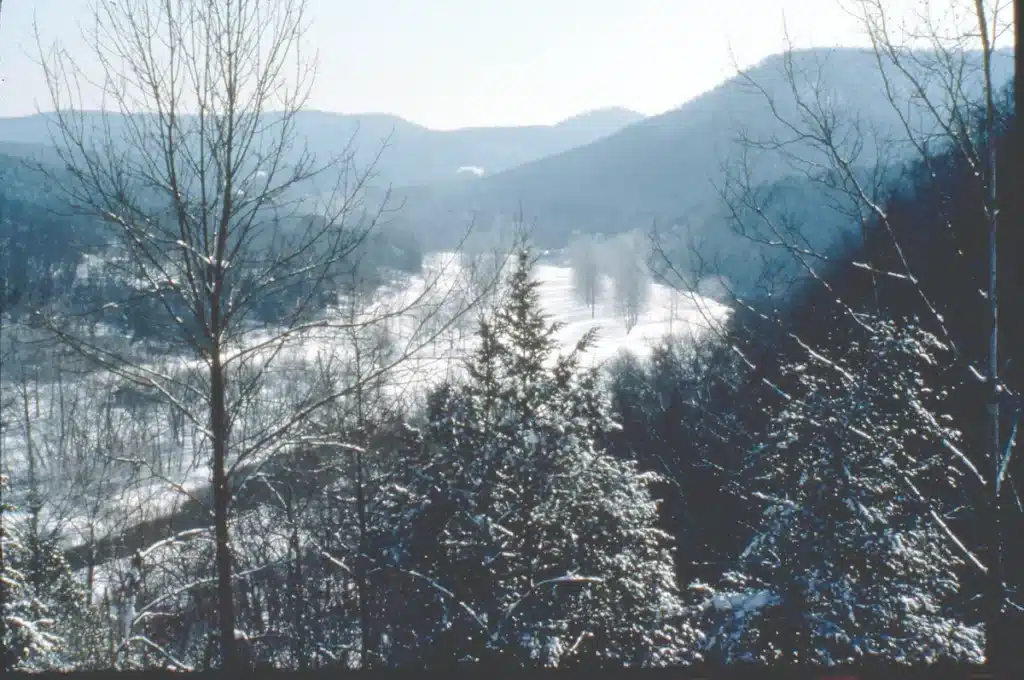
Photo by Merle Rogers
Some 2,075 of the park’s 4,300 acres are protected as the Roaring River Hills Wild Area, a designation that forever protects and preserves the wildness, naturalness, and rugged character of the hills by prohib- iting roads and mechanical equipment that would disrupt the sanctity of solitude found within the area. This wild area, one of twelve in the state park system totaling almost 23,000 acres, became a kind of test case for wild area values and management in the early 2000s. The area harbors hundreds of acres of dolomite glades that had for many years been invaded by eastern red cedar, a native species that had formerly been kept at bay on the glades by frequent wildfires. In the 1990s park managers sought to restore the open character and biodiversity of the glades with prescribed fire, a practice that has generally been permitted in wilderness and wild areas. But when the more mature cedars proved able to resist the fires, managers sought a waiver of the wild area policy to allow the physical removal of the cedars with chainsaws and motor transport, possibly even by commercial logging operators.
This proposal predictably led to passionate discussion among park staff and representatives of several conservation organizations with varying views about the management of wildness and biodiversity, which are usually mutually reinforcing but occasionally diverging. Over a period of several years, a new wild area policy was developed for the system. To get to that point, several large meetings and an on-site retreat were held, and a work group including citizen members was appointed. Federal wilderness managers held training programs in wild area management for park staff. The process also resulted in a new management plan for Roaring River. Reached through compromise, the plan provided for minimal use of tools to remove cedars on up to 170 acres of glades within the wild area and restoration of more glades beyond. Most important was an acknowledgment that wildness itself is a value worthy of respect independent of biodiversity, especially in designated wild areas.
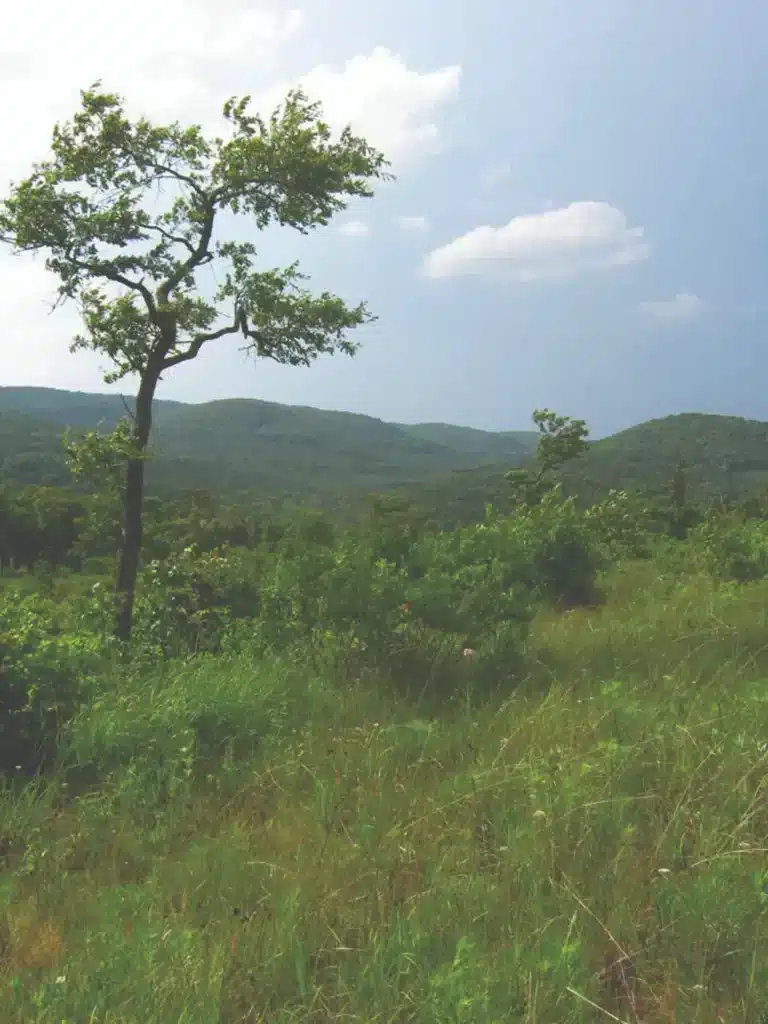
Photo by Allison Vaughn
Today, glade restoration continues, and prime examples of this significant landscape feature can be found throughout the park. Uncommon plants such as poppy mallow and Trelease’s larkspur grow in abundance on the restored glades.
As a grand and venerable place, Roaring River guards multiple treasures, stories, and impressions. Probably no other Missouri state park has as many legends associated with it as Roaring River—from old mountain hermits and outlaw hideouts to eccentric millionaires and adventurous CCC youths. Discover memories and reveries of your own here, too. Linger when you visit, and visit more than once and in different seasons. This is good advice for all the state parks, but especially so for one of the “grand old ladies.”
At Roaring River, the insight of the old Ozark adage becomes clear: “Our mountains ain’t that high, but our valleys sure are deep!”

ROARING RIVER STATE PARK • 12716 FARM ROAD 2239, CASSVILLE
Order Missouri State Parks and Historic Sites book here.
Read about how cave divers mapped the subterranean reservoirs at Roaring River State Park here.
Related Posts
Castlewood State Park
Castlewood State Park has more than thirty miles of hiking and biking trails, eleven of which are open to horseback riders. Experience the feel of a mature floodplain forest with its silver maple, box elder, black willow, white ash, sycamore, slippery elm, and hackberry. Bring a picnic and enjoy the beauty of this park.
Bennett Spring State Park Has More Than Great Fishing
Bennett Spring State Park is lovely at any time of year, but visiting in the Fall is glorious. The lodge is a rustic yet very comfortable place to stay for a few days, so you have plenty of time to take in all this State Park has to offer.
A True Gem of a State Park
Dedicated in 1938, this gem of a state park now sits amid an expanding suburban landscape and is worthy of a visit any time of year. There are twenty-two CCC-era structures to visit, rocky hills to hike, and massive trees to stop and rest under.

